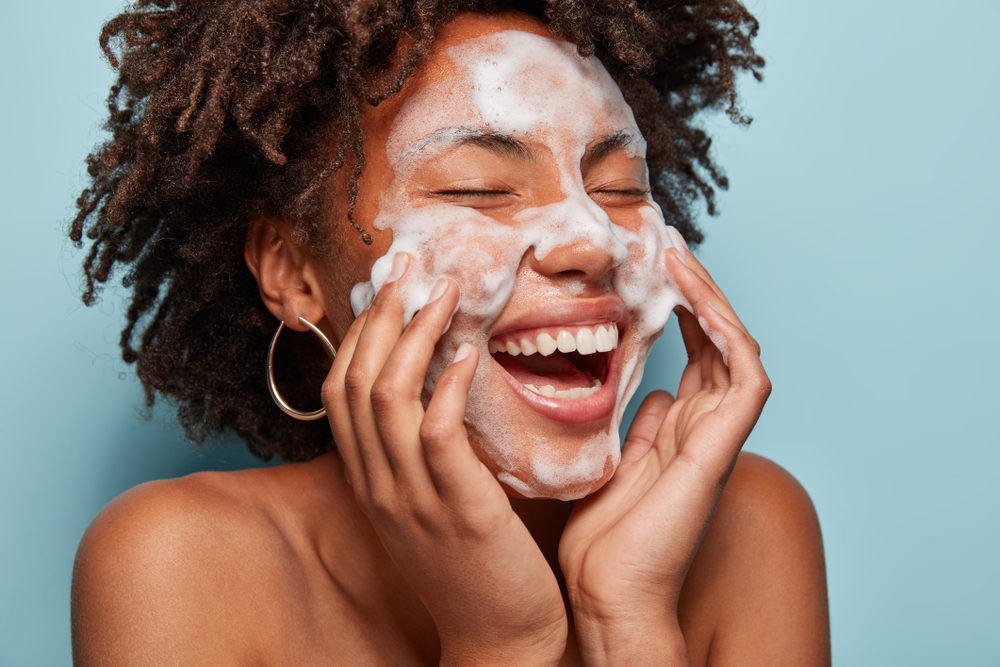In our fast-paced lives, maintaining healthy skin can often take a backseat to everything else on our endless to-do lists. Whether you’re commuting to work, hitting the gym, or socializing with friends, your skin faces various environmental stressors that pile up throughout the day like invisible layers of grime.
Living in bustling cities exposes your skin to pollution, seasonal changes, and daily environmental damage that regular face washing simply can’t handle. The makeup, sunscreen, sweat, and airborne particles that accumulate on your skin need more than a quick splash of water and basic cleanser to remove completely.
This is why dermatologists emphasize the importance of a thorough cleansing routine, particularly the practice of deep cleansing that goes beyond surface-level washing to truly reset your skin for optimal health and appearance.
Environmental toxins are clogging your pores right now
Deep cleansing is crucial for removing pollutants, dead skin cells, makeup residue, and the invisible film of environmental toxins that accumulate on your skin throughout the day. If these impurities are left on your skin overnight, they can clog pores, leading to acne breakouts and accelerated aging.
Urban air pollution contains microscopic particles that penetrate your skin and create oxidative stress, breaking down collagen and contributing to premature wrinkles and dullness. Regular cleansing removes surface pollution, but deep cleansing addresses the embedded particles that standard washing leaves behind.
Dead skin cells naturally accumulate on your skin’s surface, but without proper removal, they create a barrier that prevents your skincare products from penetrating effectively. This buildup also contributes to a dull, uneven complexion that no amount of moisturizer can fix.
Even if you don’t wear makeup daily, sunscreen, natural skin oils, and environmental debris create a film on your skin that requires thorough removal. Skipping deep cleansing allows this buildup to interfere with your skin’s natural renewal processes.
Most people are cleansing wrong twice a day
While the frequency of cleansing varies based on skin type and daily activities, cleansing twice daily is ideal for most people. However, morning and evening cleansing should serve different purposes and use different approaches based on what your skin needs at each time.
Morning cleansing should be gentle and focused on removing overnight oil production and preparing your skin for daytime products. A simple cleanse with micellar water or a gentle cleansing gel is usually sufficient unless you applied heavy night treatments that need thorough removal.
Evening cleansing is where deep cleansing becomes essential because you need to remove the entire day’s accumulation of makeup, sunscreen, pollution, and debris. This is when double cleansing and more thorough techniques become necessary for truly clean skin.
For people with oily skin, a foaming cleansing gel can be beneficial for controlling excess sebum production, but even oily skin can be over-cleansed if you’re too aggressive or use harsh products that strip away protective natural oils.
The double cleansing method removes what single cleansing misses
The first step in any deep cleansing routine is removing makeup, sunscreen, and oil-based impurities using an oil-based cleanser or micellar water. Oil-based cleansers are particularly effective because they dissolve makeup and sunscreen that water-based cleansers can’t fully remove.
The double cleansing method starts with a cleansing oil that breaks down makeup, sunscreen, and sebum, followed by a water-based cleanser that removes any remaining residue and purifies the skin. This two-step process ensures that your skin is thoroughly clean without over-stripping.
Cleansing oils might seem counterintuitive for people with oily skin, but they actually help regulate oil production by thoroughly removing pore-clogging debris without disrupting your skin’s natural barrier. The key is choosing the right oil cleanser for your skin type.
After oil cleansing, follow with a gentle water-based cleanser to remove any remaining oil and impurities. This second cleanse prepares your skin to absorb the treatments and moisturizers you apply afterward.
Chemical exfoliation works better than scrubbing
Exfoliation is an important component of deep cleansing, but it should be done strategically rather than daily. Over-exfoliating can lead to skin irritation, compromised barrier function, and increased sensitivity that makes your skin problems worse rather than better.
Chemical exfoliants like alpha hydroxy acids and beta hydroxy acids are generally more effective and less irritating than physical scrubs. These acids dissolve the bonds between dead skin cells, allowing them to shed naturally without the micro-tears that harsh scrubbing can create.
AHAs like glycolic and lactic acid work on the skin’s surface to improve texture and brightness, while BHAs like salicylic acid penetrate into pores to remove oil and debris. Choosing the right acid depends on your specific skin concerns and sensitivity level.
Start with exfoliating once or twice per week and gradually increase frequency only if your skin tolerates it well. Signs of over-exfoliation include increased redness, sensitivity, dryness, and more frequent breakouts.
Toning rebalances your skin after deep cleansing
After thorough cleansing and exfoliation, your skin’s pH may be temporarily disrupted, making toning an important step for restoring balance and preparing your skin for subsequent treatments. Modern toners do much more than just remove residual cleanser.
pH-balancing toners help restore your skin’s natural acid mantle, which is crucial for maintaining barrier function and preventing bacterial overgrowth. Look for toners with a pH between 4.5 and 6.5 to support your skin’s natural protective mechanisms.
Hydrating toners containing ingredients like hyaluronic acid, glycerin, or botanical extracts can add moisture and soothing properties while preparing your skin to absorb serums and moisturizers more effectively.
Witch hazel-based toners can be beneficial for oily or acne-prone skin because of their astringent properties, but they should be alcohol-free to avoid over-drying. These toners help minimize the appearance of pores while providing gentle antiseptic benefits.
Timing and technique matter more than expensive products
The most expensive cleansing products won’t be effective if you’re using them incorrectly or at the wrong times. Proper technique and consistency matter more than brand names or high prices when it comes to deep cleansing results.
Take time with your cleansing routine rather than rushing through it. Massage cleansers into your skin for at least 30 seconds to allow them to break down impurities effectively. This gentle massage also stimulates circulation and lymphatic drainage.
Water temperature matters more than most people realize. Hot water can strip your skin and cause irritation, while very cold water doesn’t effectively remove oil-based impurities. Lukewarm water is ideal for thorough cleansing without damage.
Avoid harsh scrubbing or aggressive rubbing, which can create inflammation and compromise your skin barrier. Gentle, circular motions with your fingertips are sufficient for effective cleansing without causing micro-injuries.
Consistency creates cumulative skin improvements
The benefits of deep cleansing become apparent over time through consistent practice rather than immediate dramatic results. Your skin needs several weeks to show the full effects of improved cleansing habits as cellular turnover cycles complete.
Track your skin’s response to new cleansing routines by taking photos and noting changes in texture, clarity, and breakout frequency. This documentation helps you identify which products and techniques work best for your individual skin needs.
Adjust your routine based on seasonal changes, hormonal fluctuations, and lifestyle factors rather than rigidly following the same routine regardless of your skin’s changing needs. Flexibility within consistent habits produces the best long-term results.
Remember that deep cleansing is just one component of healthy skin maintenance. Proper cleansing creates the foundation for other skincare products to work effectively, but it needs to be combined with appropriate moisturizing, sun protection, and targeted treatments for optimal results.















